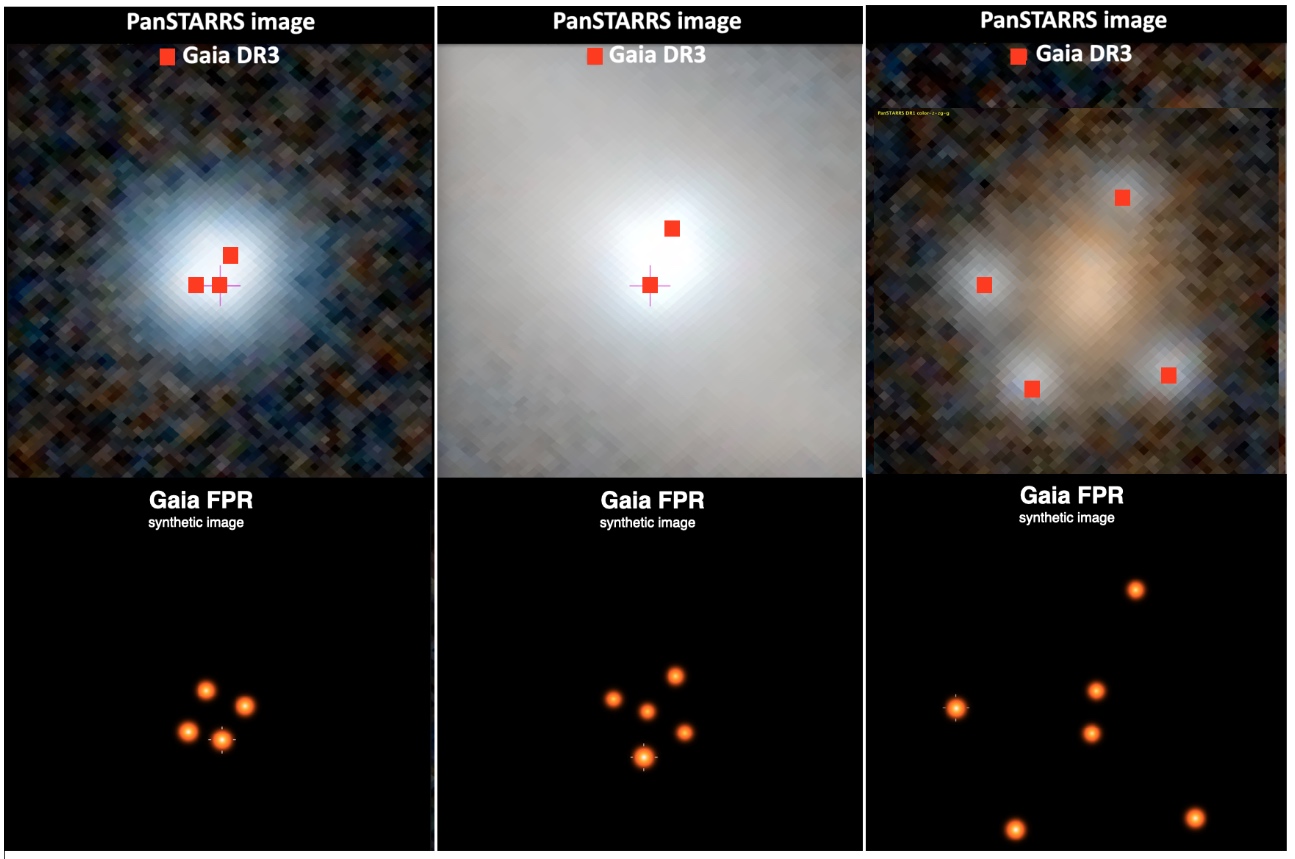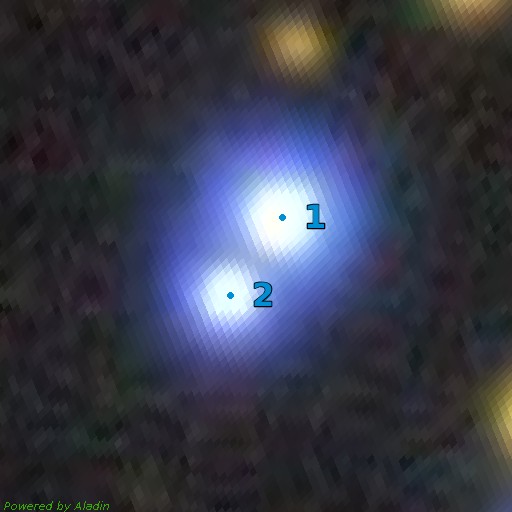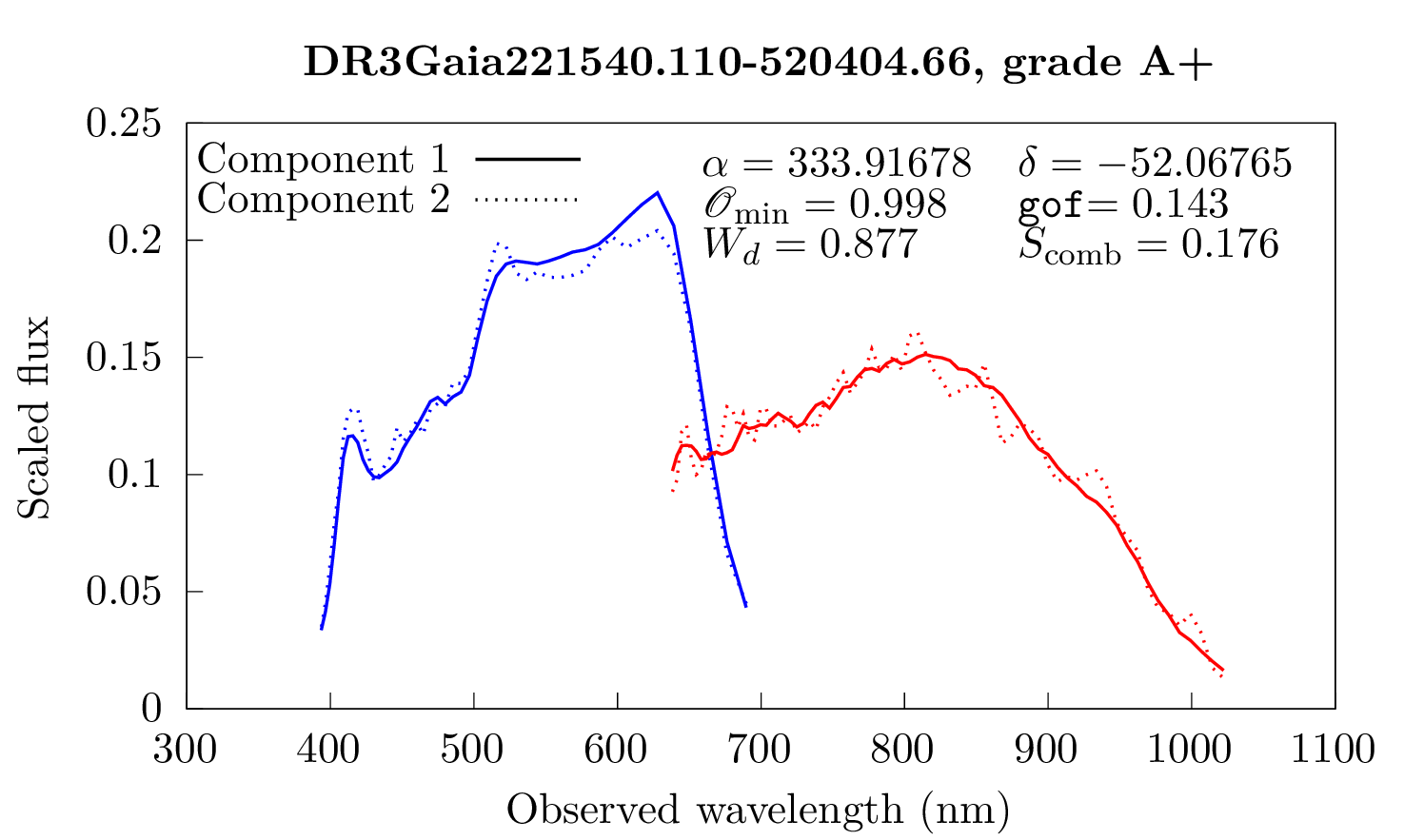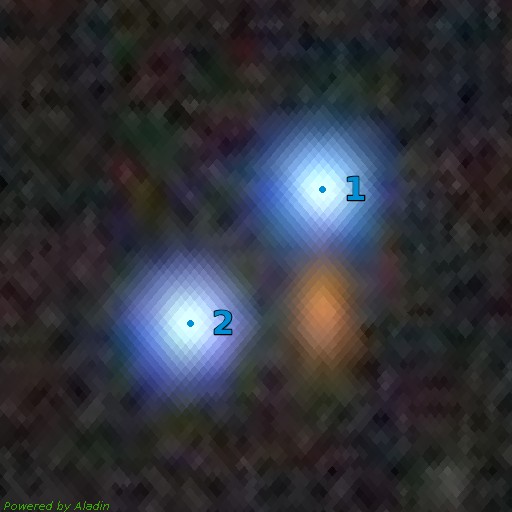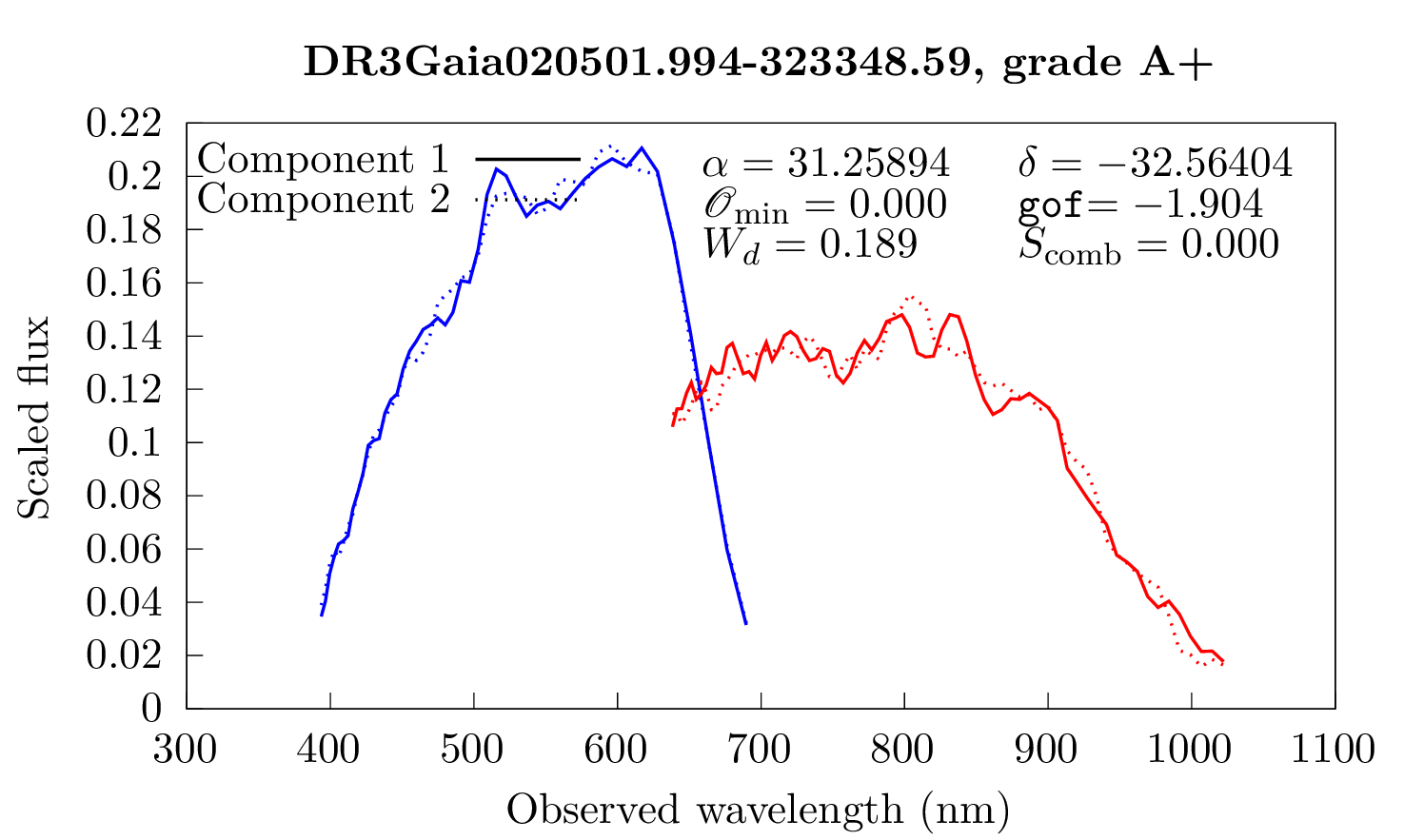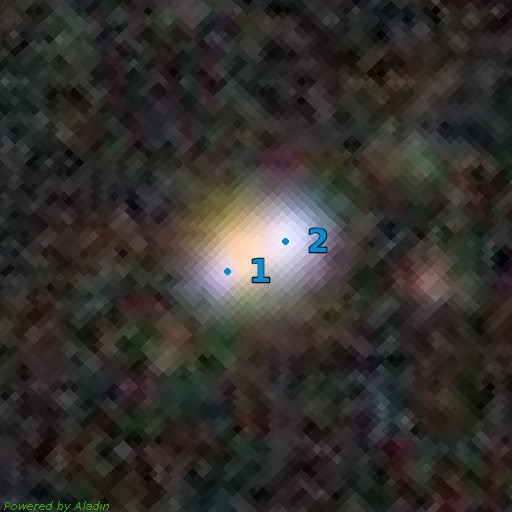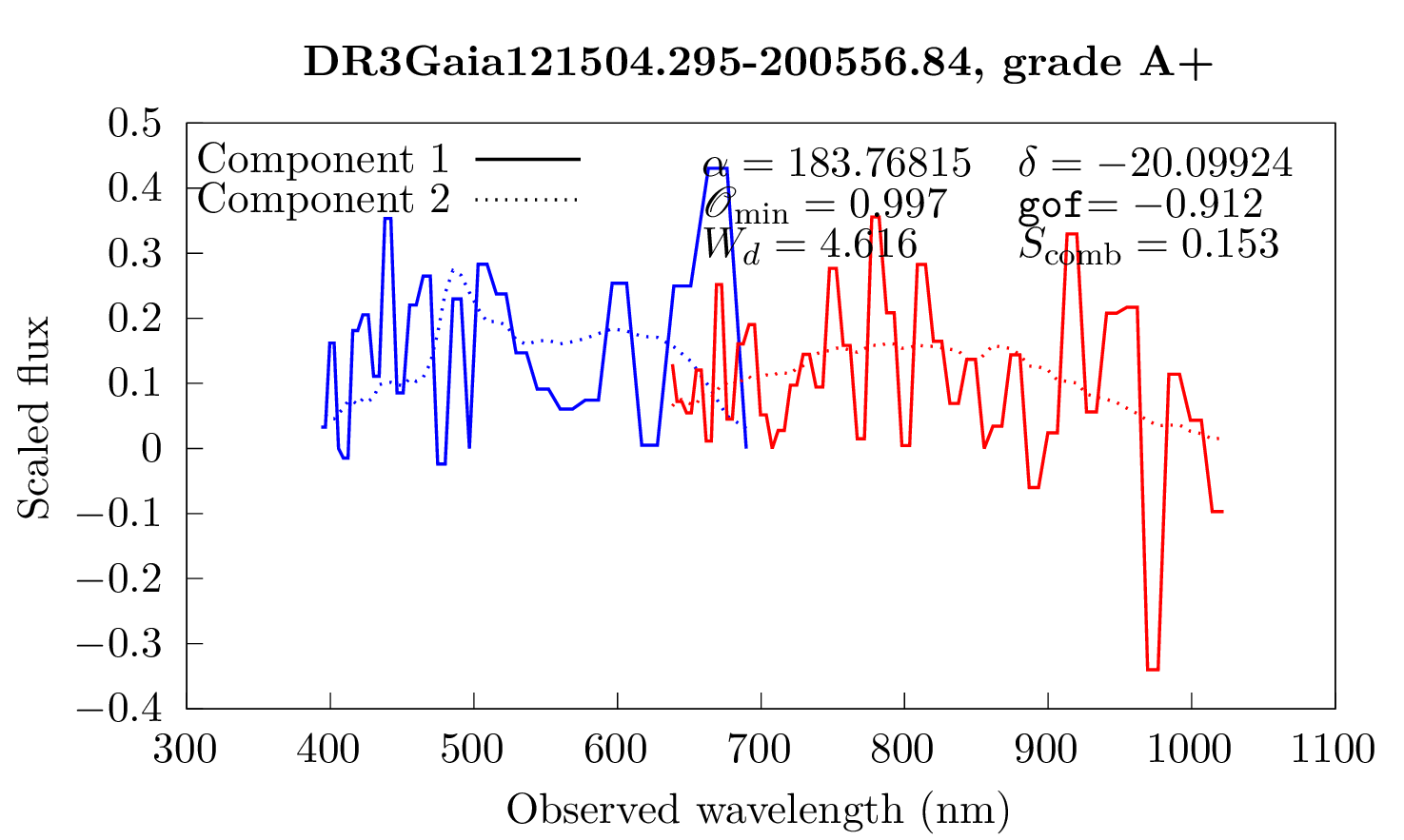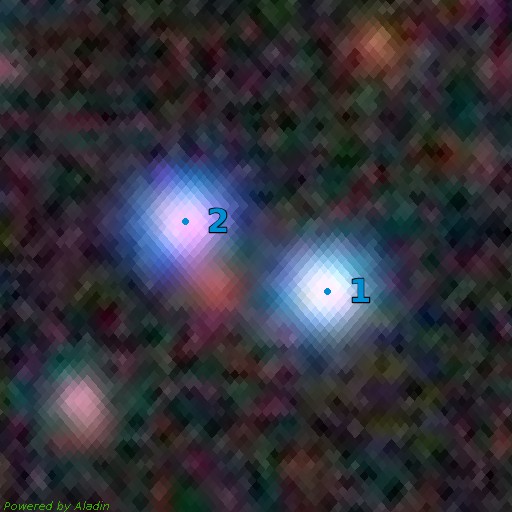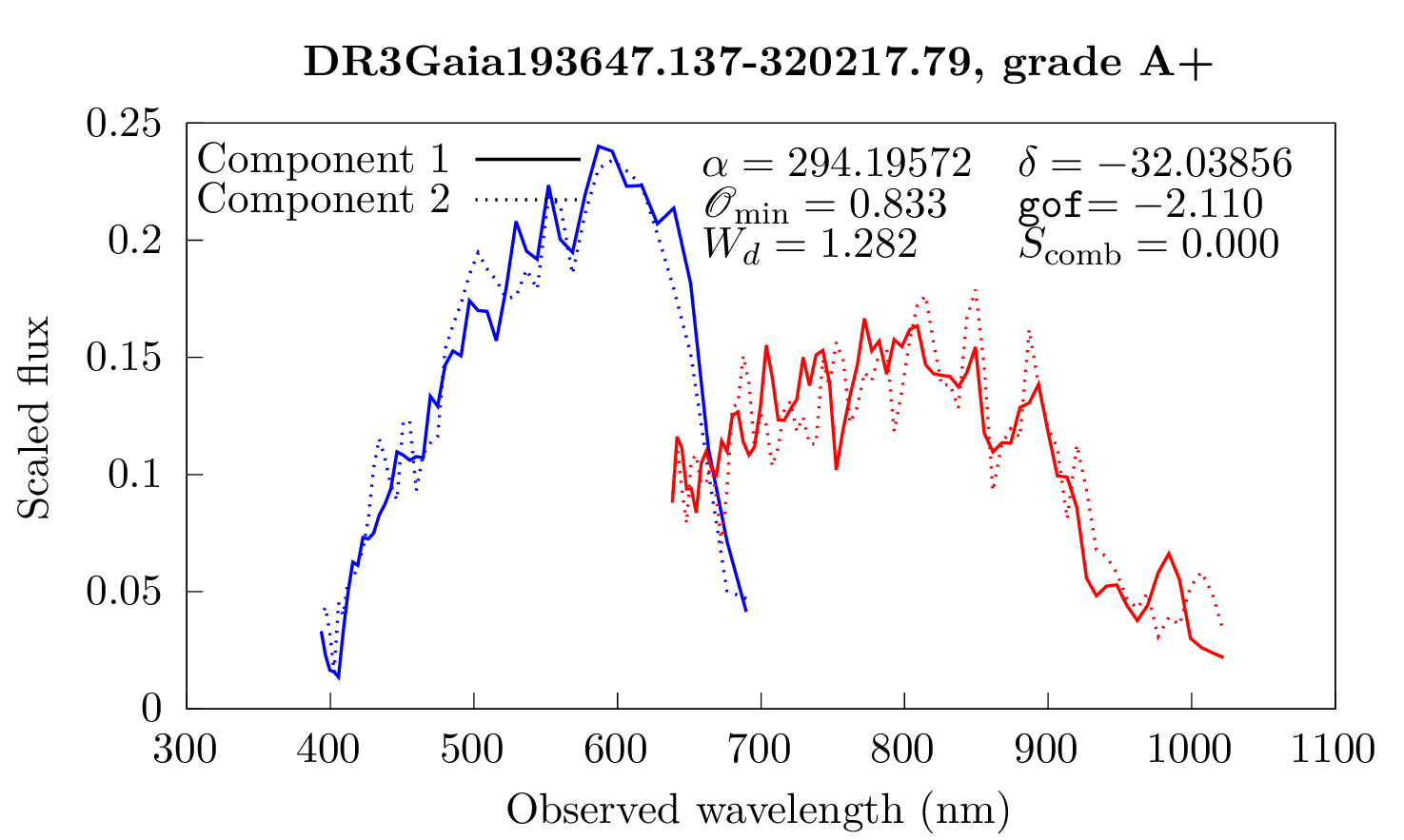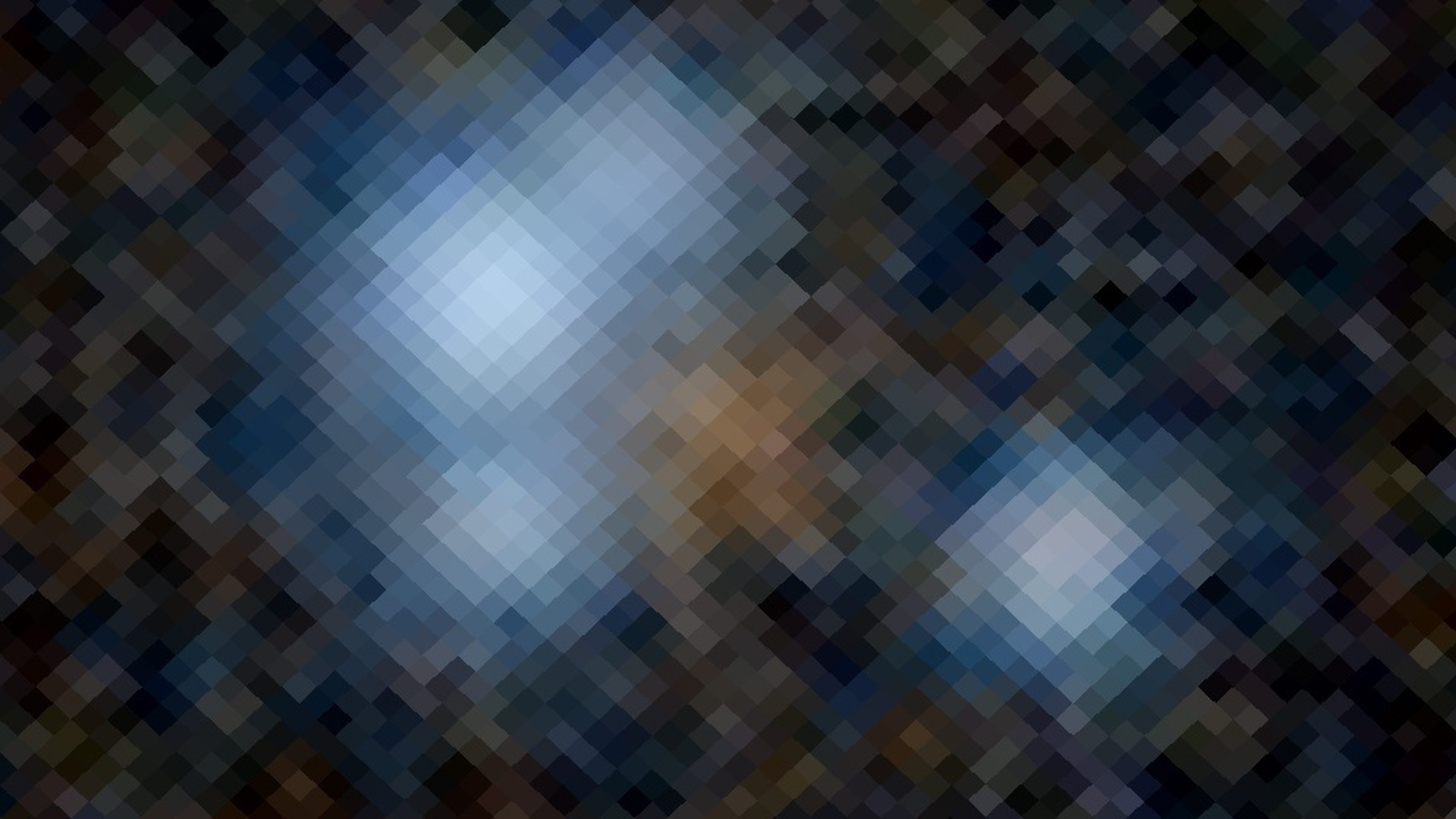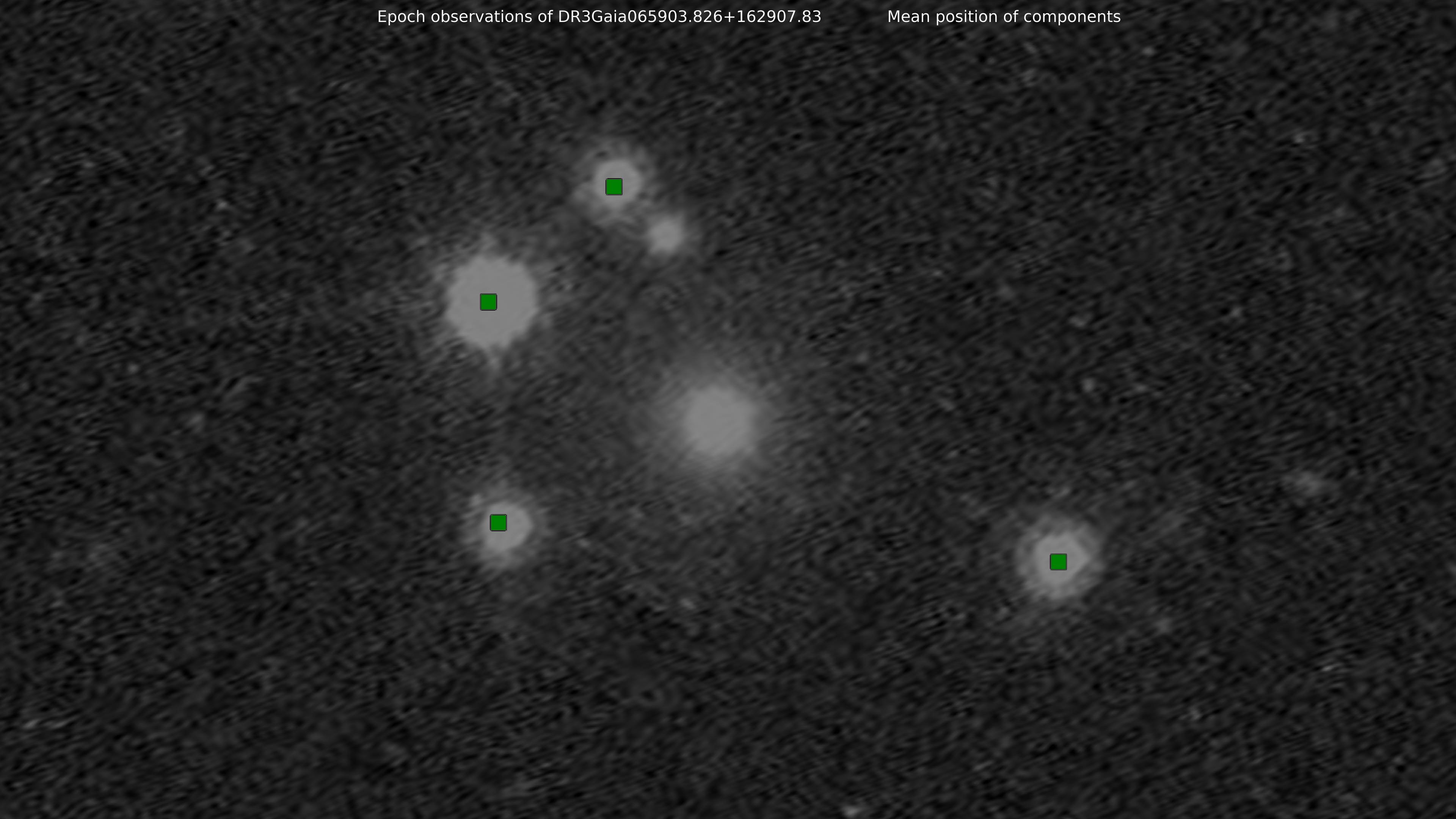Search for gravitational lenses with Gaia - Gaia
Gaia Focused Product Release
Gaia’s Gravitational Lens Candidates
How light surfs the waves of spacetime
Animation of a gravitationally lensed quasar, captured by the Gaia space telescope. Gravitational lensing occurs when the light from a quasar is bent by the gravitational field of a massive object, such as a galaxy positioned in between the quasar and the observer. In the video a ground-based picture from the PANSTARRS survey, and an image taken by the Hubble space telescope, are compared with Gaia's observations. The comparison shows that Gaia's positional accuracy is comparable to that of the Hubble Space Telescope. Gaia's exceptional resolution and full-sky coverage enable it to conduct a comprehensive survey for gravitationally lensed quasars. Credits: ESA/Gaia/DPAC / Based on the paper "Gaia Focused Product Release: A catalogue of sources around quasars to search for strongly lensed quasars" by Gaia Collaboration, A. Krone-Martins, et al. 2023 / Ground-based pictures of the quasar DR3Gaia065903.826+162907.83=J0659+1629 =“Orion’s Crossbow” by the PANSTARRS 1 survey obtained with Aladin / HST image extracted from MAST with publication reference: ads/Sa.HST#IDXO08020 / Animation of Gaia from video "INSIDE GAIA'S BILLION-PIXEL CAMERA (FOCAL PLANE)" copyright ESA / artificial voice / Video created by Stefan Jordan / Text created by Stefan Jordan, Ludovic Delchambre, and Christine Ducourant
Did you know that telescopes sometimes see double, triple or even quadruple? The same source is seen multiple times as images produced by light paths that are bent. Not because the telescope is out of focus… but thanks to a powerful resolution to distinguish the small angular separations between these images. The telescope that can surely do this is Gaia! Not only once, not twice, but potentially 3,000 times while looking at distant quasars.
Figure 1. Some of the objects seen in the sky are distant quasars – extremely bright, energetic galactic cores powered by the accretion of matter around black holes. From a list of 3,760,032 quasar candidates, Gaia presents 381 lensed quasar candidates, where multiple images of the same quasar are observed. Amongst them, 50 are deemed highly likely and five are potential Einstein crosses, extremely rare lensed systems composed of four lensed images. The left graphic shows the phenomenon of gravitational lensing in a little more depth. This occurs when the light from a distant object - a quasar here - gets deflected by the presence of a mass – a galaxy or cluster of galaxies, for instance – standing along the line of sight between the observer and the object. This intermediate mass acts as a giant magnifying glass, or lens, that amplifies the brightness of light and can produce multiple images of the faraway source onto the sky. The six lens candidates shown on the right were identified in Gaia DR3, and shown as seen by the Dark Energy Spectroscopic Instrument (DESI) and PanSTARRS surveys. Credits: ESA/Gaia/DPAC - CC BY-SA 3.0 IGO. Acknowledgements: Based on the paper by Gaia Collaboration, A. Krone-Martins et al. 2023, Images of lenses by DESI and PanSTARRS, Graphic produced by ATG under contract to ESA, created by Juliana Calegari with help from Nicola Jenner, Nicole Shearer, Iris Nijman, Tineke Roegiers, Christine Ducourant, Ludovic Delchambre.
Gaia’s powerful resolution (~0.18”, comparable to an ant's egg seen at 1km) allows to observe the individual light coming from sources close to each other even though these sources are located far away from us. This has allowed to retrieve an impressive catalogue of more than 500,000 quasars with neighbours in their immediate vicinity; some of these are gravitational lenses, of which the majority is completely new. Some 3,000 lenses are expected in the final Gaia data release. With Gaia’s all-sky scanning mode observing all areas of the sky many times over the course of its mission lifetime, these sources are thoroughly mapped for the first time.
Figure 2. For three gravitationally lensed sources (from left to right: H1413+117, J2240+0321 and J1310-1714), the Gaia DR3 positions, without special treatment of the quasar environment, are shown, plotted over ground-based PanSTARRS images. The bottom row shows synthetic images reconstructed from Gaia's Focused Product Release, with the quasar environment analysis implemented. Observations taken from ground can be a bit blurry, due to the atmosphere. With Gaia's exceptional resolution, these images of the gravitationally lensed source are resolved. Credits: "Gaia Focused Product Release: A catalogue of sources around quasars to search for strongly lensed quasars" by Gaia Collaboration, A. Krone-Martins , et al. 2023
But what does it mean…. images of bent light? When the light of a source travels through space, it does not travel in a straight line, rather it surfs the waves of spacetime, affected by heavy masses on its way through space. When encountering a huge mass on its way, the light of the source can split up into multiple images of the source. When 4 such images are created and observed, we refer to them as an Einstein cross. When two such images are seen, they are called doublets. Finding lensed sources with two images is already quite special but Einstein crosses are a rarer phenomenon. So far only ~80 are known (2018A&A...618A..56D, Ducourant et al.)
The new GravLens catalogue published by the Gaia Collaboration contains ~380 fair candidates of lensed quasars found using artificial intelligence, but brings an enormous potential by identifying ~500,000 multiplets of sources around quasars with two or more sources. A result obtained by searching in the vicinity of more than 3.7 million quasars for potential secondary images.
The lensed sources observed by Gaia are caused by the so-called strong lensing phenomenon. The created images are all traceable to a single background source, and the heavy object causing the lensing is typically a galaxy or cluster of galaxies. With this Gaia Focused Product Release, Gaia publishes its first catalogue of sources around quasars to allow for the search of strongly lensed quasars.
Figure 3. A series of candidate lensed quasars. On the left, ground-based DESI images with Gaia's Focused Product Release positions overplotted. On the right, the associated information as obtained with Gaia's low-resolution spectro-photometer. When both components show a similar spectra, the observed sources are more likely to be both images of the same gravitationally lensed source. Such a correspondence is depicted in the top row. The bottom row shows cases where Gaia's spectra - though compatible, are noisier, either because they are fainter, or because they were less observed. Credits: "Gaia Focused Product Release: A catalogue of sources around quasars to search for strongly lensed quasars" by Gaia Collaboration, A. Krone-Martins , et al. 2023
Lots of information can be deduced from the strongly lensed quasars. In particular they can help us to probe the two most enigmatic components of the Universe: dark matter and dark energy. As the light gets deflected by any kind of mass, we can study the distribution of dark matter around the deflector and determine its mass.
These lenses can also help us to learn more about the Universe itself. They can be used as a direct way of measuring the expansion rate of the Universe, the well-known H0 cosmological constant. Indeed, we know that the universe is in an acceleration phase caused by a hypothetical dark energy whose origin is presently totally unknown. Gravitational lenses provide the observational evidence upon which the future cosmology shall rely.
The more of these lensed sources are identified by Gaia, the better we can understand the Universe as well!
With this release, follow-up opportunities become available which could lead to a flurry of confirmed lenses. The data published today forms a strong base for further studies. Gaia’s open data policy brings chances for discoveries to all! So dive in and explore!
Figure 4. On the left, a ground-based picture from the PANSTARRS survey is shown, in which four images of the quasar are visible, thanks to gravitational lensing. In the centre, the mean positions of the quasar images are shown on top of the PANSTARRS image as obtained from Gaia. On the right, the mean positions from Gaia are plotted over an image obtained with the Hubble Space Telescope. Credits: HST image extracted from MAST with Publication reference: ads/Sa.HST#IDXO08020. Ground-based pictures of the quasar DR3Gaia065903.826+162907.83=J0659+1629 =“Orion’s Crossbow” by the PANSTARRS 1 survey obtained with Aladin. Based on the paper "Gaia Focused Product Release: Search for strongly lensed quasars." by Gaia Collaboration, A. Krone-Martins, C. Ducourant, L. Galluccio et al.
Further reading
- "Gaia Focused Product Release: A catalogue of sources around quasars to search for strongly lensed quasars" by Gaia Collaboration, A. Krone-Martins , et al.
- Related story published in 2021: 12 rare Einstein crosses discovered with Gaia
- Gaia also observes the temporary magnification of the light of sources when it passes behind a heavy object, an effect known as microlensing. Gaia’s data release 3 contains 363 such events. But while the strong lensing is caused by very heavy objects like star clusters or galaxies, microlensing is typically a phenomenon taking place closer to home by “lighter” objects like stars or planets. "The dimming and brightening of Gaia's variable stars" was published along with Gaia's Data Release 3 and contains a visualisation of Gaia's microlensing events.
This animation provides a visual demonstration of how the position of a quasar relative to a lensing galaxy influences the position, number, and brightness of gravitational lensed images. Quasars are supermassive black holes that continuously accrete immense amounts of gas and matter, making them the brightest objects in the Universe.In some rare cases, the light from an extremely distant quasar passes near a massive galaxy or a cluster of galaxies. The gravitational field of these intervening objects bends the quasar's light rays, resulting in the production of multiple images of the quasar that would otherwise be a single background source. This phenomenon is known as strong gravitational lensing.The animation highlights that the distribution of mass within the lensing galaxy and its position relative to the line-of-sight toward the quasar determine the number and positions of the lensed images that are created.To explore the potential configurations of the lensed images, the animation artificially moves the position of the quasar in relation to the lensing galaxy. When the quasar and the lensing galaxy are not well aligned, only a single image of the quasar is observed. If they are closer in alignment, two images can be seen. And when they are almost perfectly aligned, four images of the quasar become visible.The animation notes that these changes cannot be observed in reality because quasars are located at such vast distances that their motions are incredibly small. Nonetheless, this visualization helps illustrate how the relative positions of quasars and lensing galaxies influence the appearance of gravitational lensed images. Credits: ESA/Gaia/DPAC / This animation explains the content of the paper: "Focus Product Release: Search for strongly lensed quasars." by Gaia Collaboration, A. Krone-Martins, et al. 2023; and makes use of: Artist’s impression of quasar ULAS J1120+0641, ESO/M. Kornmesser, CC BY 4.0 / Galaxy Picture: Hubble Space Telescope image of Messier 77, NASA, ESA & A. van der Hoeven / Background image: NASA, ESA and T.M. Brown (STScI) / The artificial voice was created with https://ttsmp3.com / Video Animation created by Stefan Jordan / Based on a simulation by Quentin Petit, Laboratoire d'Astrophysique de Bordeaux, France / Text of the animation created by: Stefan Jordan, Ludovic Delchambre, Christine Ducourant
Story written by Tineke Roegiers, Christine Ducourant, Laurent Galluccio
Credit: ESA/Gaia/DPAC
Contact email: Gaia Helpdesk
Published: 10-10-2023
- Removed a total of (19) style text-align:center;
- Removed a total of (20) style text-align:justify;
More Gaia Focused Product Release stories?
COSMOLOGY:
Gaia's gravitational lens search around quasars
Solar System:
Updated astrometry for Gaia's Solar System Objects
Variability:
Gaia's extended radial velocity epoch data for Long Period Variables
Interstellar Medium:
Diffuse Interstellar Bands from Gaia's Radial Velocity Spectra
Globular Clusters:
Gaia's additional data from engineering images taken in crowded regions
-
ESA's press release for Gaia's Focused Product Release
-
- Removed a total of (15) style text-align:center;








































 Sign in
Sign in
 Science & Technology
Science & Technology

